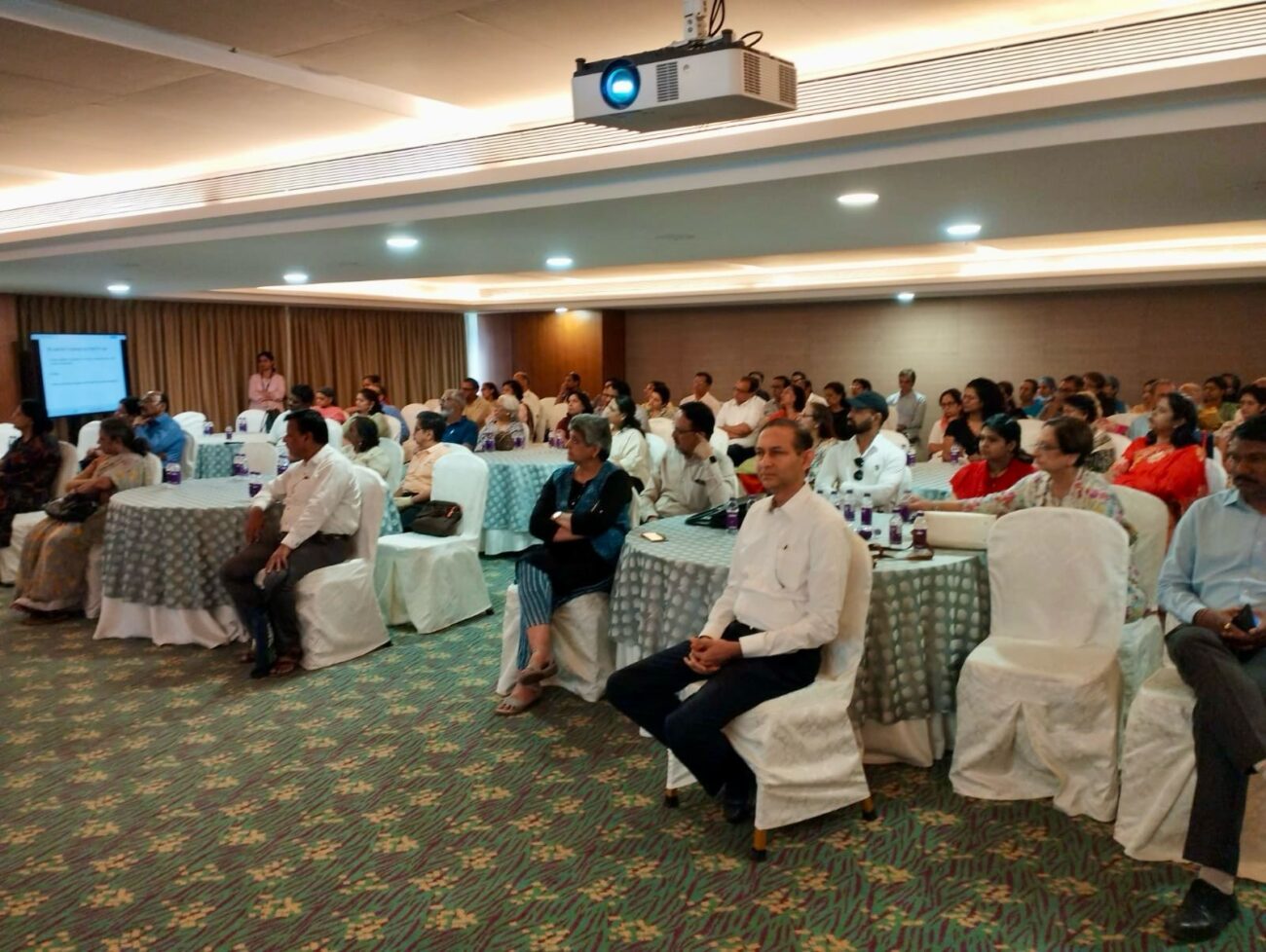Incidence of poorly controlled diabetes highest in 50-60 age group, finds Metropolis’ study
Women fare better than men in keeping diabetes in control Out of the total of 532182 samples tested for HbA1c over the last five years in Mumbai by Metropolis Healthcare, as many as 25% were found
Women fare better than men in keeping diabetes in control
Out of the total of 532182 samples tested for HbA1c over the last five years in Mumbai by Metropolis Healthcare, as many as 25% were found to be suffering from poorly controlled diabetes.
The incidence of poorly controlled diabetes was found to be the highest in the age group of 50-60 years (about 32%), followed by 60-70 years (about 29%) and 40-50 years (27.6%). The incidence was the lowest in the age group of 20-30 years (10%) but increased steadily to peak in the age group of 50-60 years. It thereafter showed a steady decline in the older age groups.
Interestingly, 22.7% of all females tested were found to suffer from poorly controlled diabetes, compared to 28% for males.
Out of the more than half a million samples tested at the company’s global reference laboratory in Mumbai, almost 23% were found to be in pre-diabetic stage, about 29% were found to be diabetic, while 22.6% tested non-diabetic.
About 25% of samples tested for HbA1c reported levels greater than 8%, which means that their blood glucose levels are not controlled. Prolonged high blood glucose levels put diabetic patients under risk to develop diabetes-related complications.
(Please see figures in the table below.)
| Analysis of 532182 samples tested for HbA1c in Mumbai | ||||
| Age Group | Normal | Pre-Diabetic | Diabetic | Poorly controlled diabetes |
| 20 to 30 | 65.07 | 17.49 | 7.41 | 10.03 |
| 30 to 40 | 42.33 | 23.92 | 16.00 | 17.75 |
| 40 to 50 | 21.68 | 24.36 | 26.33 | 27.63 |
| 50 to 60 | 11.33 | 22.60 | 34.05 | 32.02 |
| 60 to 70 | 8.82 | 22.08 | 39.85 | 29.25 |
| 70 to 80 | 9.35 | 24.78 | 42.17 | 23.70 |
| Above 80 | 13.05 | 29.61 | 39.51 | 17.84 |
| Average | 22.67 | 23.02 | 28.95 | 25.36 |
| Gender | Normal | Pre-Diabetic | Diabetic | Diabetic with Poor Control |
| Female | 26.64 | 24.11 | 26.52 | 22.73 |
| Male | 18.54 | 21.89 | 31.48 | 28.09 |
Commenting on the study, Dr. Mayur Nigalye, Deputy Chief of Lab, Metropolis Healthcare Ltd., said: “Diabetes is a growing challenge in India with estimated 8.7% diabetic population in the age group of 20 and 70 years. The rising prevalence of diabetes and other non-communicable diseases is driven by a combination of factors – rapid urbanization, sedentary lifestyles, unhealthy diets, uncontrolled use of alcohol and tobacco. Lifestyle interventions2 (sleep, exercise and diet modifications) along with regular monitoring is a must for Diabetes Management.”
For the purpose of this data analysis:
- Data for samples tested for HbA1c was collated for over a period of five years
- Sample data of repetitive patients were removed and only one single reading from a patient was used for the study
- Sample was analysed by applying the reference range from 2019 ADA Guidelines
ADA 2019 Reference Range for HbA1c
Result ranges below 5.7% – Normal
Result ranges between 5.7% and 6.5% – Prediabetes
Result ranges greater than 6.5% and below 8% – Diabetes
Result ranges above 8% – Poorly controlled diabetes
A1C Testing – Recommendations
- Perform the A1C test at least two times a year in patients who are meeting treatment goals (and who have stable glycemic control).
- Perform the A1C test quarterly in patients whose therapy has changed or who are not meeting glycemic goals.
- Point-of-care testing for A1C provides the opportunity for more timely treatment changes
- 1 United Kingdom Prospective Diabetes Study Group: Intensive blood-glucose control with sulphonylureas or insulin compared with conventional treatment and risk of complications in patients with type 2 diabetes (UKPDS 33). Lancet 352: 837–853, 1998
- 2 Nutrition and lifestyle intervention in type 2 diabetes: pilot study in the Netherlands showing improved glucose control and reduction in glucose lowering medication (Pot GK, et al. bmjnph 2019;0:1–8.). British Medical Journal, Prevention and Health
Type 2 diabetes is a form of diabetes that is characterized by high blood sugar levels, presence of insulin resistance and relative lack of insulin secretion. The symptoms of type 2 diabetes develop over years and it is possible to entirely miss a diagnosis if periodic testing or monitoring is not done. In many cases, the disease is diagnosed several years after onset or once complications have already set in.
Type 2 Diabetes Complications
With type 2 diabetes it is important to control blood glucose levels in order to avoid associated complications. A well-planned diet in consultation with your dietician/doctor, regular physical activity, prescribed medications and regular periodic testing may help prevent complications. These complications develop over many years and is directly related to increased blood glucose levels causing damage to blood vessels. While damage to tiny blood vessels causes micro-vascular complications, damage to large vessels causes macro-vascular complications.
Microvascular Complications: Related to Eye, Kidney and Nerves
Eyes: Abnormal Blood glucose levels for a long duration causes cataracts and/or retinopathy which may eventually lead to diminished or loss of vision. It is important to monitor blood glucose levels and do a yearly eye check-up with an ophthalmologist.
Kidneys: Abnormal Blood glucose levels for a long duration can lead to Diabetic Nephropathy and if untreated leads to impaired kidney function resulting in long term dialysis and/or kidney transplant. To prevent diabetic nephropathy, it is important to test for mirco-albuminuria along with regular blood sugar monitoring. With medications, it is possible to prevent or restrict further kidney damage.
Nerves: Long term diabetes can lead to condition affecting nerve cells called as Diabetic Neuropathy (peripheral, autonomic, proximal, and focal neuropathies). Peripheral neuropathy is the most common form of nerve damage, and it most often affects the nerves related to the hands and feet. One serious complication of diabetic peripheral neuropathy to the feet is loss of sensations to the skin resulting in injuries leading to wounds. The wounds may become infected and the infection can spread to the leg and if left untreated, the foot may need to be amputated to keep the infection from spreading.
Macrovascular Complications: Related to Heart, Brain, and Blood Vessels
Type 2 diabetes or increased blood sugar levels can be a risk factor in cardiovascular diseases leading to formation of plaque resulting in a heart attack, stroke or vessel blockage in the legs (DVT).
Research has shown that people with type 2 diabetes who reduce their HbA1c level by 1% are: [1]
- 19% less likely to develop cataracts
- 16% less likely to have a heart condition
- 43% less likely to undergo amputation or death due to peripheral vascular disease
What is HbA1c?
The term HbA1c refers to glycated haemoglobin. It develops when haemoglobin, a protein within red blood cells that carries oxygen throughout your body combines with glucose in the blood resulting in ‘glycation of haemoglobin’. By measuring glycated haemoglobin (HbA1c), clinicians can get an overall picture of what average blood sugar levels have been over A1C over approximately 3 months
For people with diabetes this is important as the higher the HbA1c, the greater the risk of developing diabetes-related complications.





